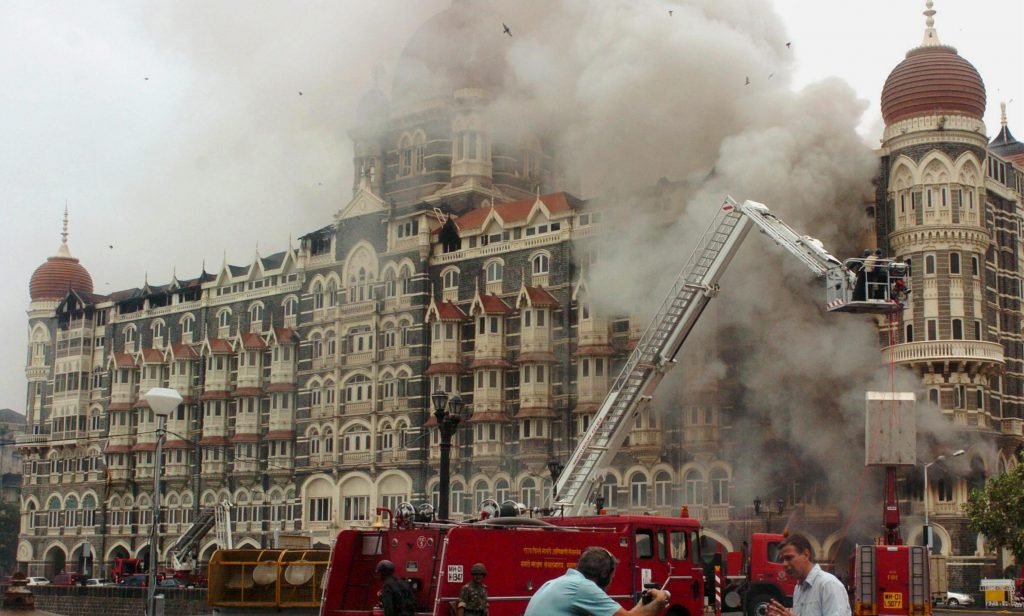|
Listen to article
Getting your Trinity Audio player ready...
|

There exists by nature a nexus between transnational organised crime (TOC) and terrorism. Often a complex and ever-changing relationship, this nexus exists to facilitate actors logistically, monetarily, or more.
In the Indian context, one could take the example of the fugitive Dawood Ibrahim, sanctioned under UNSC Res1267, who used his TOC network to facilitate the 1993 bombings in Bombay (now Mumbai). The 2015 Gurdaspur terror attack whose perpetrators are supposed to have come through the international border at Punjab is a recent example of how the nexus operates. These routes are controlled by TOC groups who use them for weapons, drugs, and human trafficking. The arrests of suspects alleged to be providing weapons to the 2016 Nice, France, terror attack perpetrators revealed that the attacker also had links to TOC groups. Such cases show the impact that this nexus has on international security and the abrasion of stability it causes.
From the traditional security construct of the Cold-war era, states have moved into a new international security dimension that recognises the role of non-state actors as threats to a nation, its security, and domestic and regional stability. This new international security paradigm acknowledges these threats and seeks to address them through a network of international policing and cooperation, creating a new global security model that moves away from the traditional state/treaty (e.g. NATO vs Warsaw Pact) centric model.
While TOC and terror groups had co-existed individually, post the 9/11 crackdown on terror and criminal financing, these groups seem to have developed a sort of convergence. While terrorist groups now benefit from the activities of the TOC groups in the trafficking of arms, drugs, illicit resources trade, and in opening the routes for such activities, TOC groups in return require terror groups to secure their access and territorial influence to procure said resources, drugs, and humans, amongst other things. These arrangements have brought to light the multifarious dynamics of the nexus between these groups.
While terrorist groups now benefit from the activities of the TOC groups in the trafficking of arms, drugs, illicit resources trade, and in opening the routes for such activities, TOC groups in return require terror groups to secure their access and territorial influence to procure said resources, drugs, and humans, amongst other things.
The most troublesome synergy is the emergence of what some experts call “hybrid” organisations. These, such as the Dawood Ibrahim group and the Haqqani network, are groups that are both TOC and terror groups, that is to say, they have transformed into organisations with both the political and ideological orientation of a terror group and the financial motivation of a TOC group, combined into a single, highly dangerous organisation with superior operational abilities that strain the global intelligence and policing networks.
The Global Counterterrorism Forum (GCTF) launched the Hague Policy Toolkit prepared by the United Nations inter-regional Crime and Justice Research Institute (UNICRI) in the Netherlands to guide countries to help combat this nexus.
These, such as the Dawood Ibrahim group and the Haqqani network, are groups that are both TOC and terror groups, that is to say, they have transformed into organisations with both the political and ideological orientation of a terror group and the financial motivation of a TOC group, combined into a single, highly dangerous organisation with superior operational abilities that strain the global intelligence and policing networks.
Bridging the gap between domestic anti-crime and counter-terror legislation and international conventions is the first step for increasing the efficiency of existing frameworks to combat the nexus between TOC and terrorism as well as strengthening laws for the protection of whistleblowers. This is most important in the case of anti-corruption legislation, as corruption is the biggest enabler of TOC and terrorism because it allows illicit activities to become entwined with legal ones and enables money laundering etc.
Nations must also work towards the consolidation of information and research related to the nexus to better understand behavioural patterns, communication channels, and the use of the shadow economy for uncovering the nexus. This must also aim to help identify vulnerable groups and individuals and should include gender-based research to help stop gender-based and sexual violence on women inflicted by the nexus.
Countries must focus on capacity building programs to help increase the ability of law enforcement agencies to identify an emerging nexus. This must include robust cybersecurity platforms for agencies. Cybersecurity includes the monitoring of cyberspace for financial frauds, tracing virtual currencies, and tracking usage of the dark web by outfits to purchase weapons, facilitate a shadow economy, and most importantly, for stopping the usage of the web for radicalisation activities and radical propaganda. Increasing capacity building in the cybersecurity sphere and the sphere of financial investigation and asset tracking and recovery is the best means to break the nexus.
Finally, nations must recognise the ability of the media to play the role of facilitator in promoting awareness. Taking media and journalists on-board and using communication platforms such as local radio, local newspapers, etc., can help spread knowledge and check radicalisation activities.
Increasing capacity building in the cybersecurity sphere and the sphere of financial investigation and asset tracking and recovery is the best means to break the nexus.
The ever-growing nexus between TOC and terror groups represents a disconcerting trend and threat to global security as these groups have fused their financial and logistical capacity, thereby making it challenging to eradicate a group that is part of a complex network. However, effective coordination between nations to combat this nexus can buttress global security.






Add comment